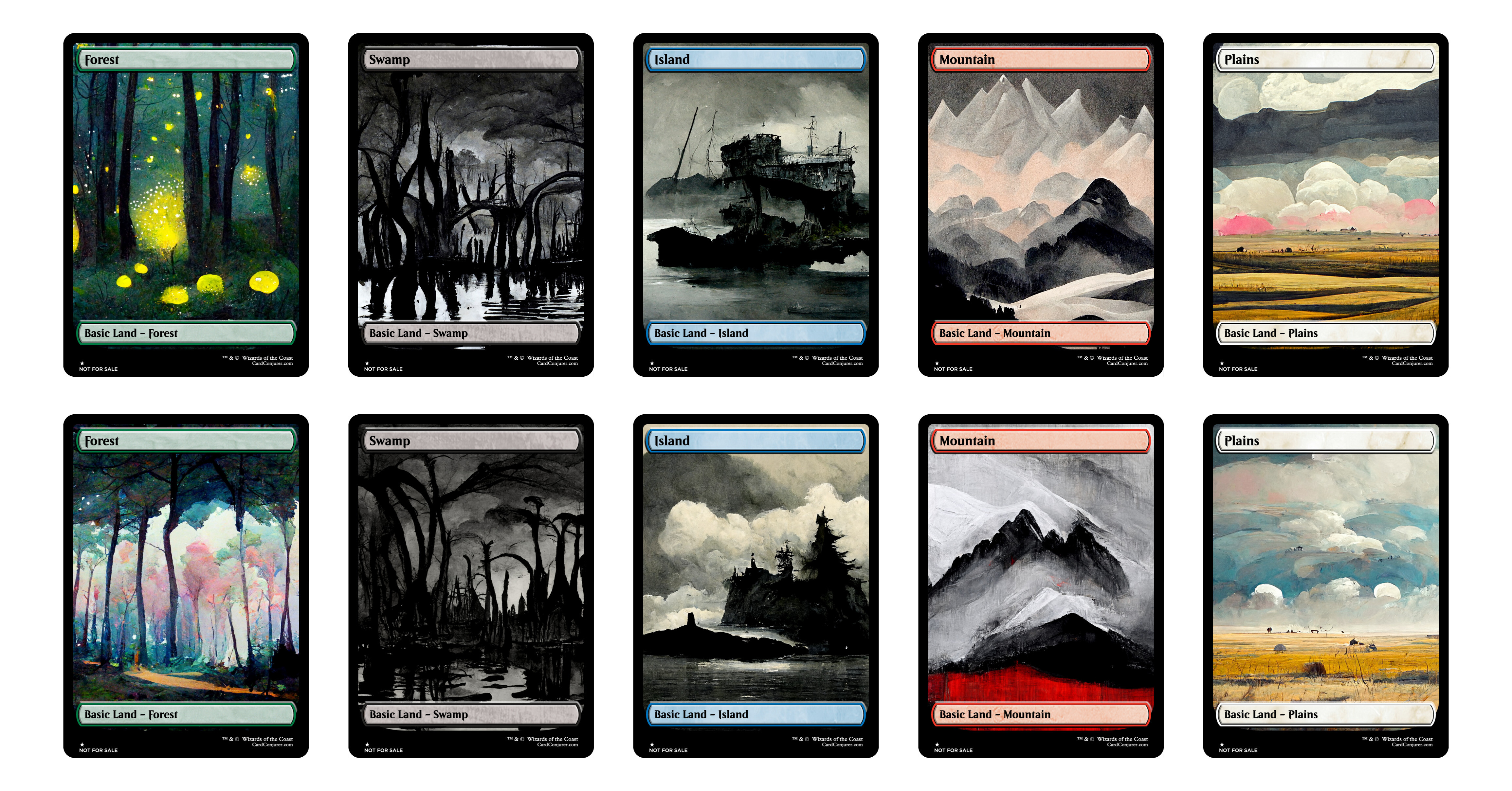Midjourney AI, Games, and Design Intent
Jul 17, 2022 · Tags: AI, Game Design, Design Theory
Here are three cards of the popular trading card game Magic the Gathering:
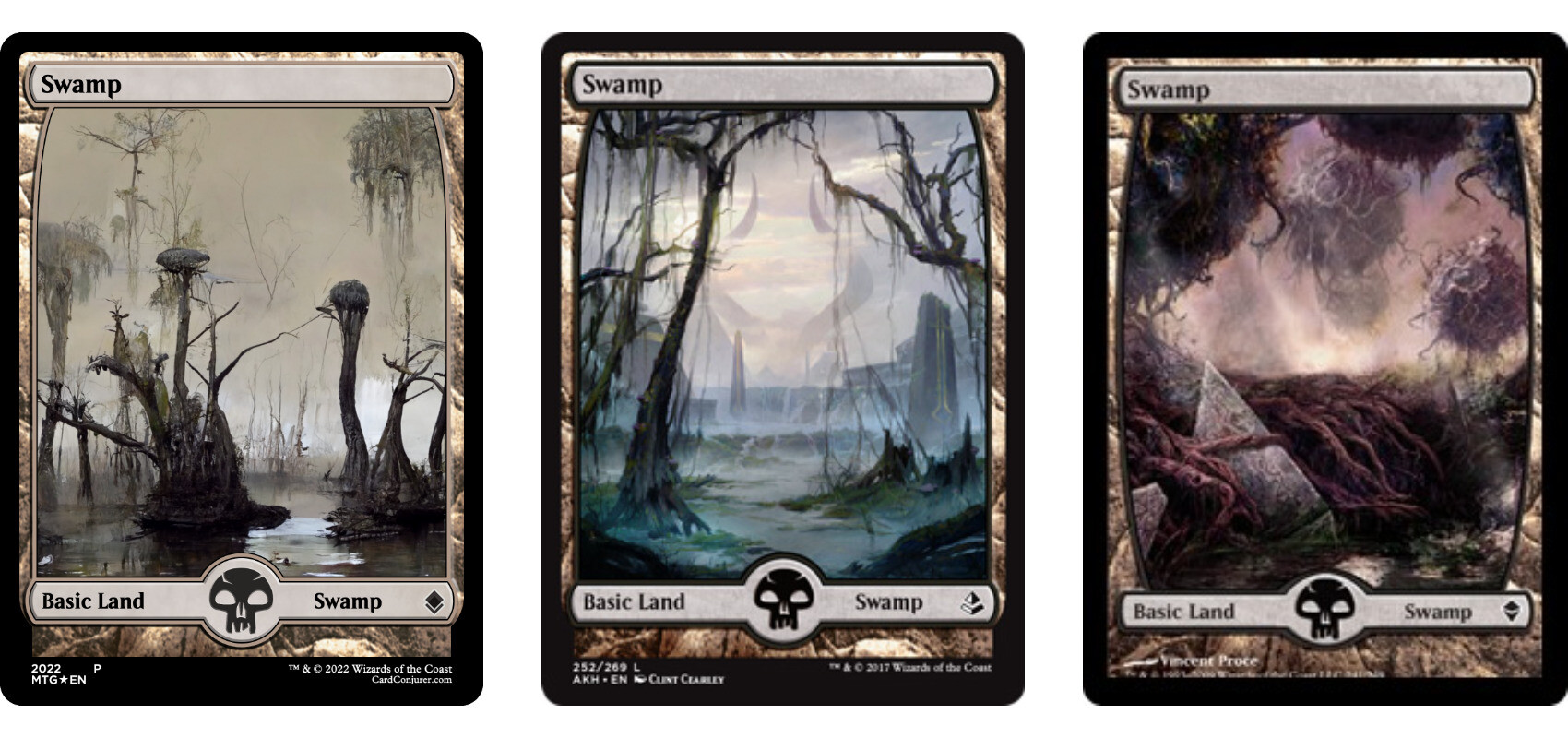
The interesting part about this is that only two of them are 'real' cards.
I got a beta invitation for Midjourney's Discord bot and used it to figure out if I could create believable artworks for Magic the Gathering and learn a bit about the system along the way.
It's probably impossible to spot the new card if you are not familiar with the game, but it's the first one:
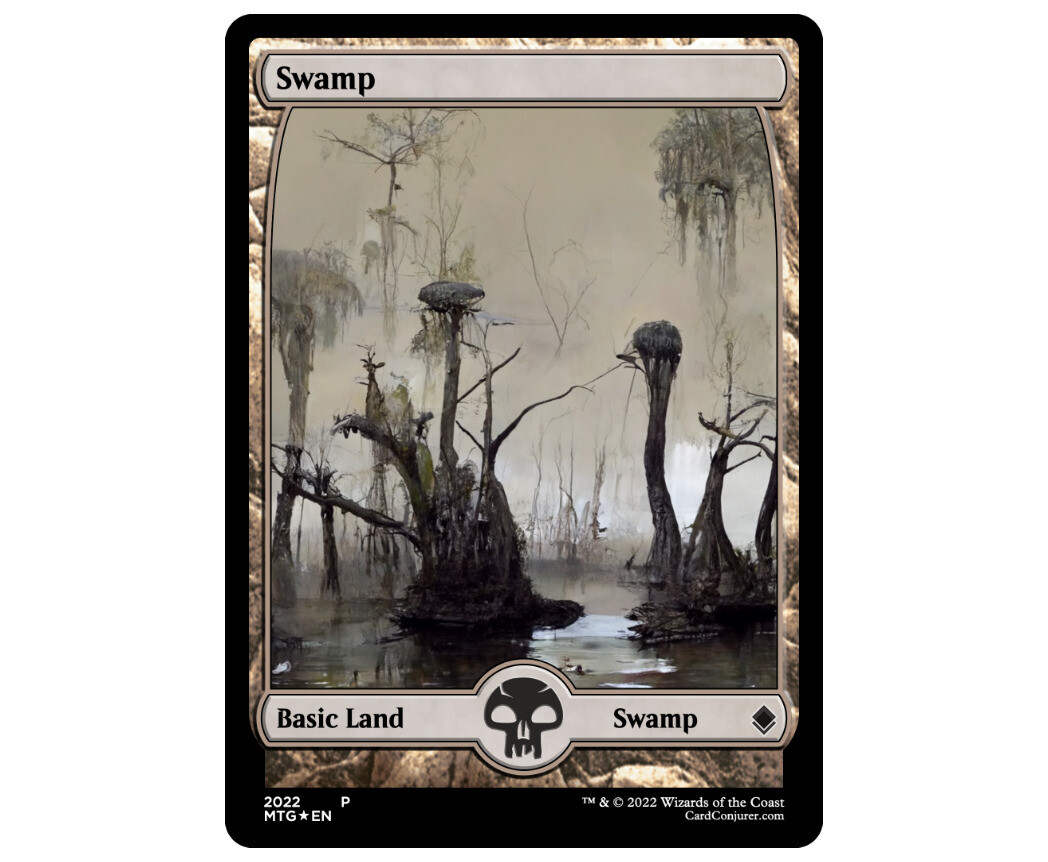
In general, it's pretty easy to interact with Midjourney. You give it a prompt, like "A dreamy and weird swamp painted with desaturated gouache", and it sends you an image of what the algorithm thought you meant. As simple as that:
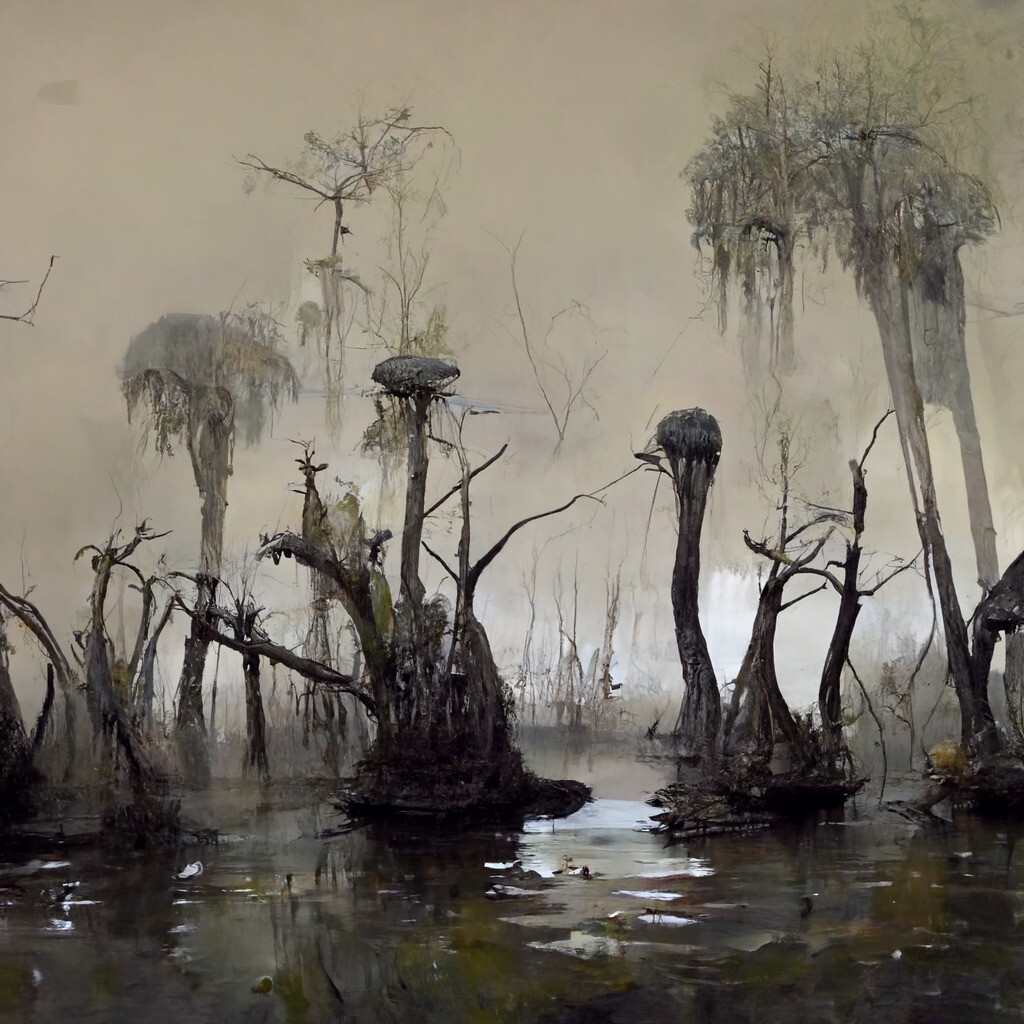
Disclaimer: Midjourney is still in beta, and the experience might change in the future.
What Generative AI is Already Good at
In Magic the Gathering (MtG), there are five land types (Forest, Mountain, Swamp, Plains and Island). These lands are the basis of every MtG game, and cards with beautiful artworks frequently become collector items. So, Wizards of the Coast, the publisher of MtG, has a long history of commissioning artists to come up with visually appealing standard land illustrations.
We are looking at a typical concept art scenario: An artist gets a brief outlining a mood and then illustrates the subject.
That's literally what an AI can already do today. You give it a brief, and it gives you a result. Like this:

You can even alter the brief slightly and get matching images:

AI already is a powerful tool for one-offs and inspiration.
Some Challenges of Artificial Intelligence for Creative Use Cases
The 'client -> brief -> artist -> output' process from above is obviously a gross simplification. Usually, you have multiple people involved that discuss and iterate on a design. The art director pays attention to the art style and its place in the overall project. In the case of Magic the Gathering, the design has to match the general mood of a set with >300 cards every few months.
This process shows two challenges for generative AI:
-
The discussion part of the process is missing: You can't tell the algorithm to fine-tune a particular part of the image. Or paint it a little more 'expressive'. Generative systems usually don't understand the vocabulary artists learned in art school. So nuance becomes a challenge – at least for now.
-
Another problem is consistency. Even if you give it two similar briefs, the style of the generated images can be very different, as shown below:
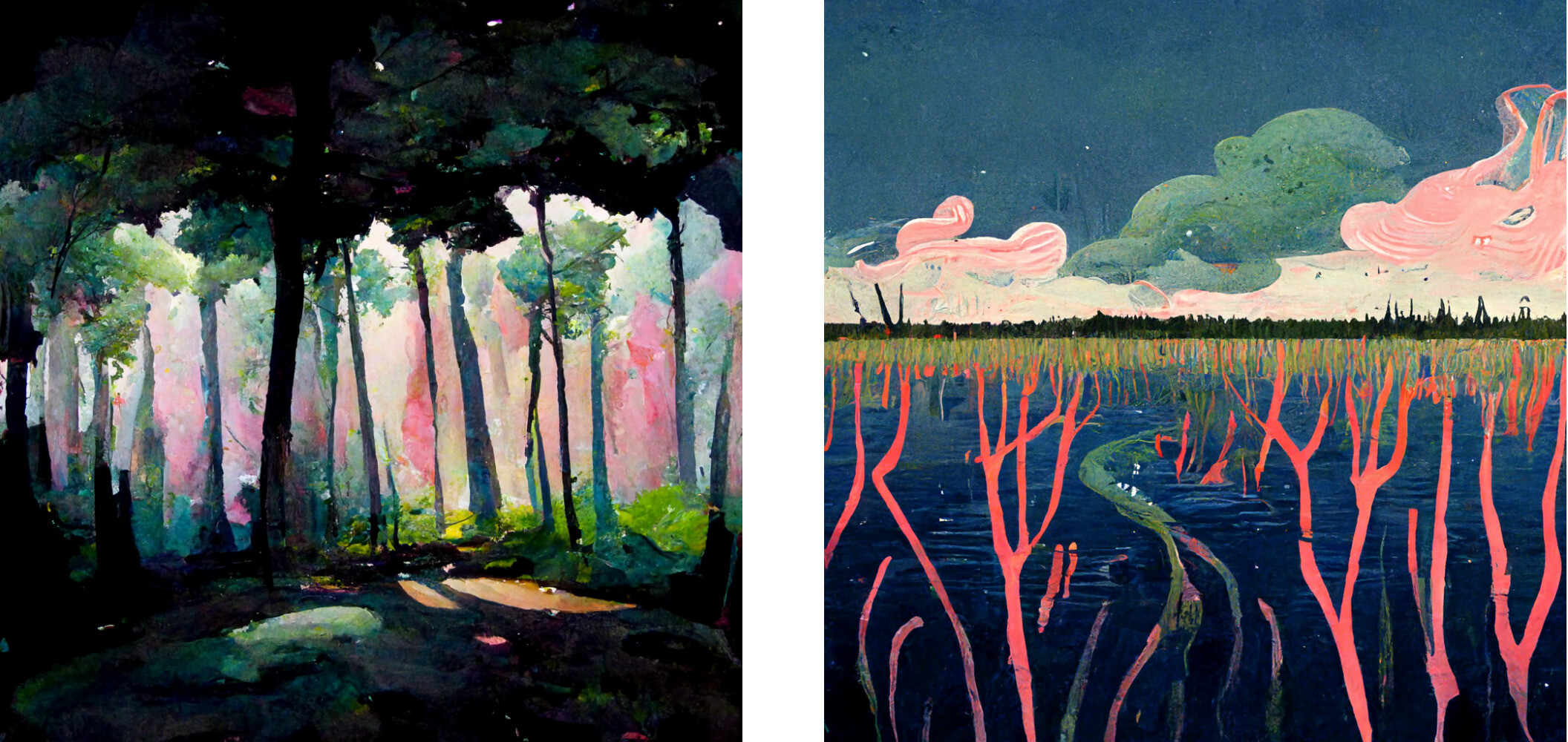
However, these challenges will be undoubtedly solved, eventually.
Midjourney's choice to use a chatbot is quite interesting – it's not hard to imagine them implementing editing features that will feel like art critiques in the future.
About Artists and the AI Competition
So what about the poor artist who paints artworks for Magic the Gathering or concepts for blockbuster movies? Are AI agents destroying their jobs?
It has almost become a mantra that curating and selecting art will become increasingly important. This focus on curation would shift the responsibility away from the illustrator toward the art director, who could commission an AI instead of an expensive human being.
I disagree to some extent. Not because I don't believe that the tools will get better at understanding complex design briefs – we will certainly get there. But rather because people usually don't know what they want. Often, the process of creating something involves questioning the brief and therefore helps to refine it. You sharpen design intent through experimentation and opposing opinions.
The feedback you get from artificial systems is definite in contrast.
It's input -> output.
There is no explanation or arguing. No questions asked and no doubt.
Nonetheless, generative algorithms are here to stay. AI will enhance and augment the creative process. The speed and unexpected results are valuable strengths, and AI will see heavy use in the creative industry.
In my opinion AI is an incredible powerful tool, but it can't replace the creative process that is both dependent on and targeted at humans.
In case you wonder what happened to my MtG-experiment, the cards that I co-created with my new AI buddy turned out pretty good:
